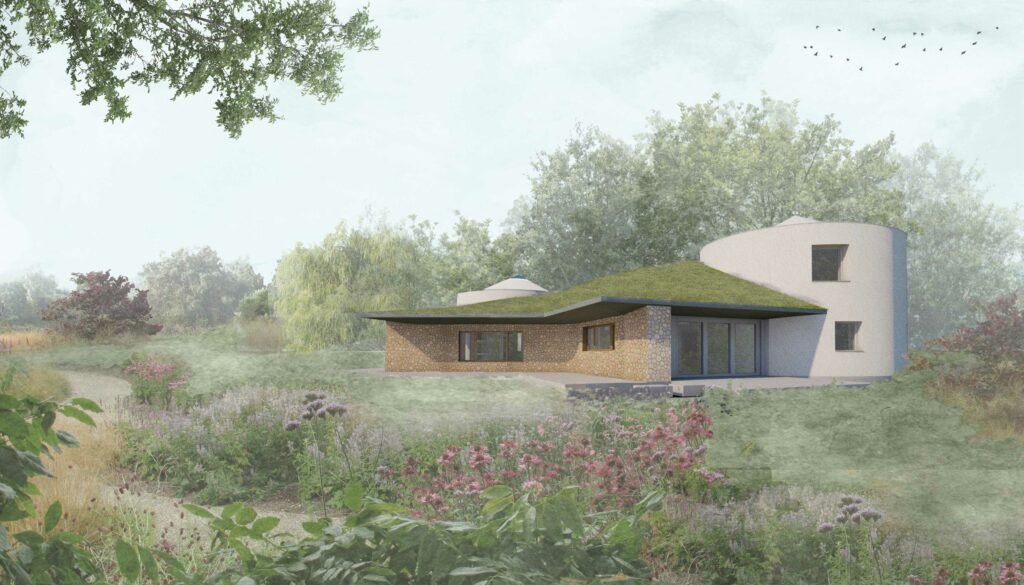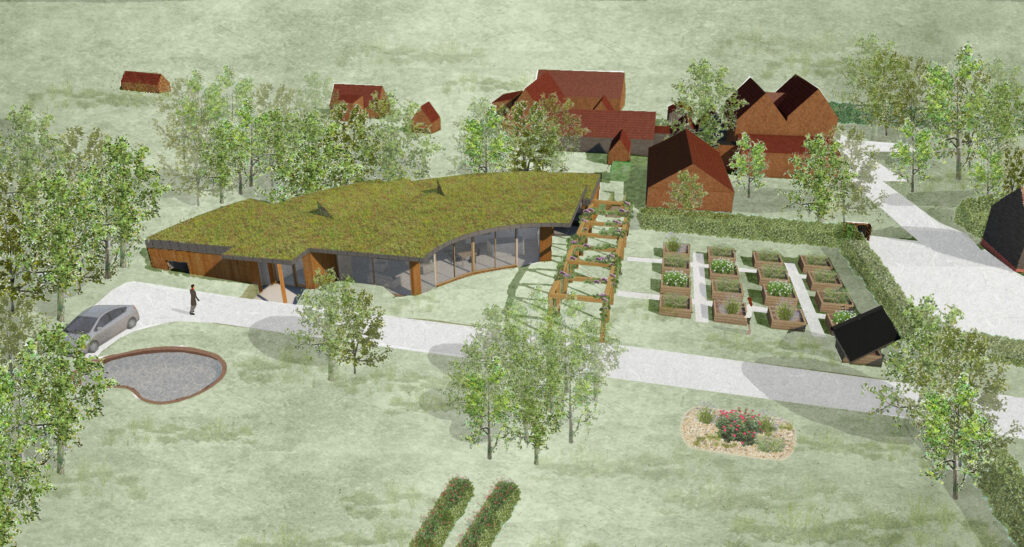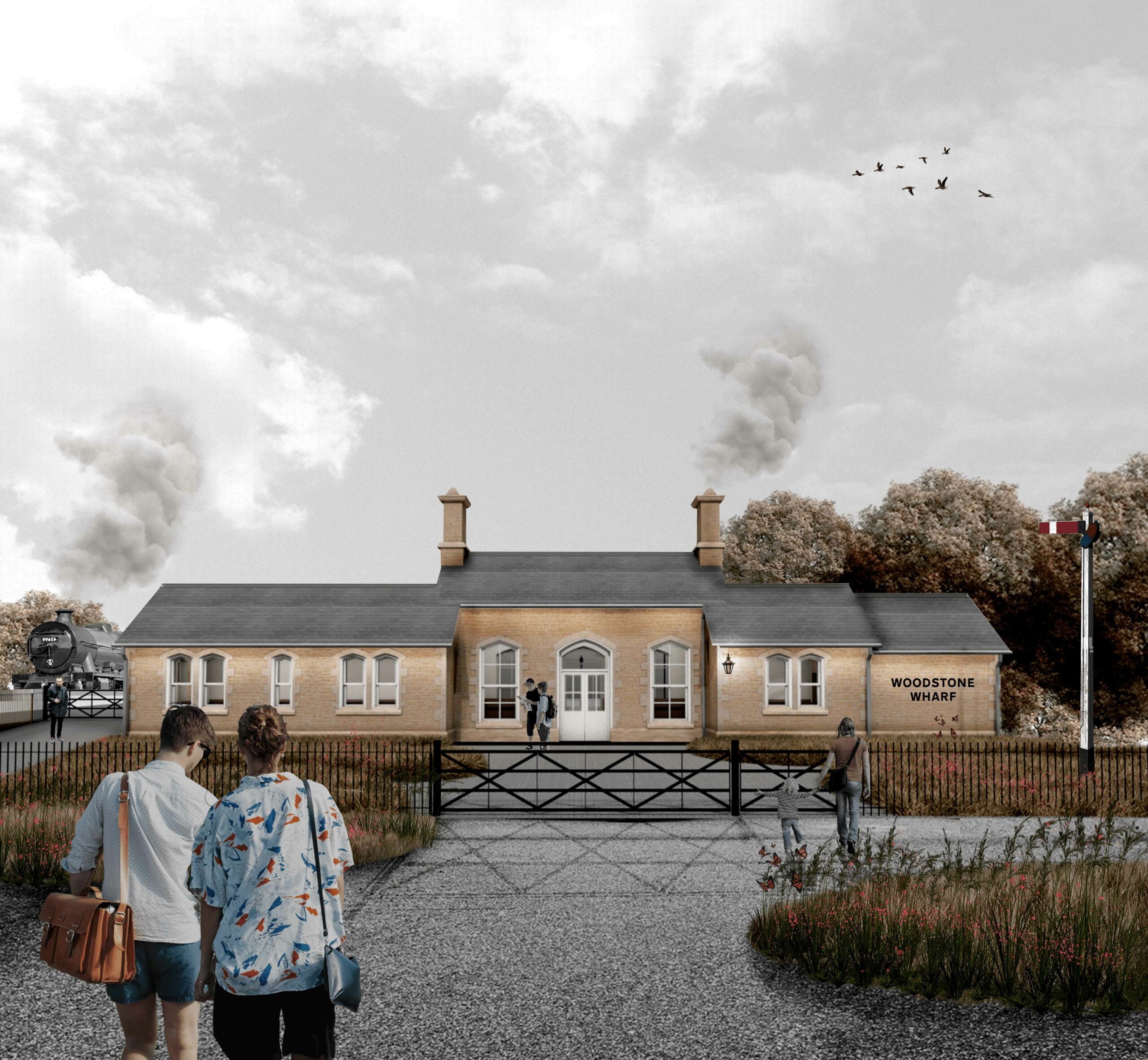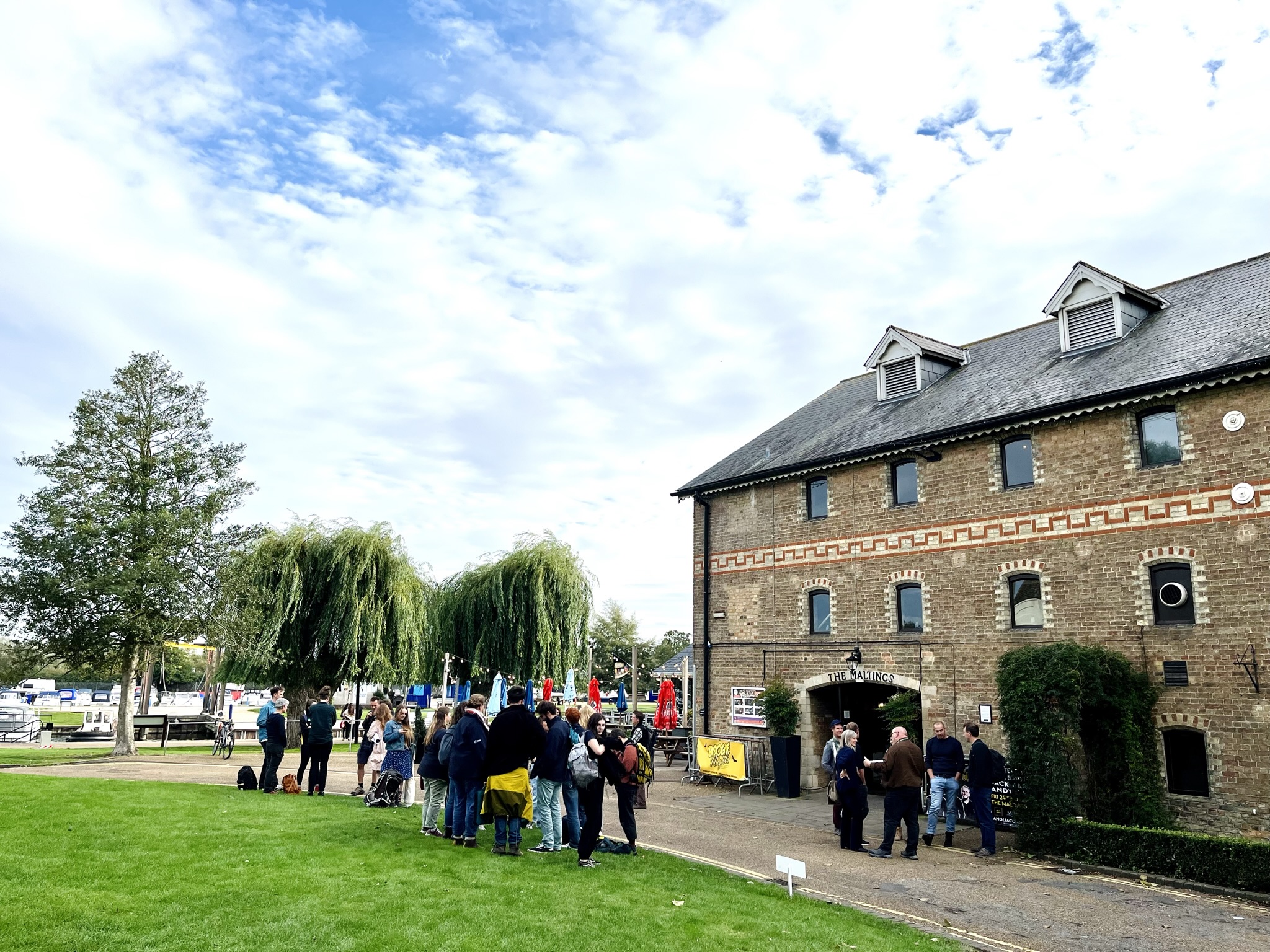
Do you dream of building a new house in the countryside, but worry about navigating the complexities of planning permission? Read on for an in-depth guide to Paragraph 84 houses, and take inspiration from our portfolio of exceptional new build countryside homes.
Do you dream of building a new home in the countryside? While building a new home in a green belt or rural setting can be a dream for many people it comes with a set of unique challenges, with planning permission being the primary hurdle. But for the truly dedicated, there’s a path less travelled: Paragraph 84 of the National Planning Policy Framework. This clause offers a rare exception to strict rural development restrictions, allowing dream countryside homes to become a reality.
What is Paragraph 84?
Part of the National Planning Policy Framework, Paragraph 84 – previously known as Paragraph 80, 79 and 55 – is a planning clause that ensures homes built in open countryside areas meet exceptional quality standards. Essentially, where national planning policy is strongly weighted against the development of new housing in open countryside, Paragraph 84 offers an exemption to this.
However, despite seemingly offering a clear route through planning policy, it’s not a straightforward process due to the subjective nature of the policy, and demands creativity, collaboration, and a commitment to exceptional design.
So what exactly does the policy set out?
What are the requirements of Paragraph 84?
The framework of Paragraph 84 is much the same as it was over 25 years ago when it was introduced by then Environment Secretary, John Gummer. The current legislation states that:
Planning policies and decisions should avoid the development of isolated homes in the countryside unless one or more of the following circumstances apply:
(a) there is an essential need for a rural worker, including those taking majority control of a farm business, to live permanently at or near their place of work in the countryside;
(b) the development would represent the optimal viable use of a heritage asset or would be appropriate enabling development to secure the future of heritage assets;
(c) the development would re-use redundant or disused buildings and enhance its immediate setting;
(d) the development would involve the subdivision of an existing residential building; or
(e) the design is of exceptional quality, in that it:
- is truly outstanding, reflecting the highest standards in architecture, and would help to raise standards of design more generally in rural areas; and
- would significantly enhance its immediate setting, and be sensitive to the defining characteristics of the local area.
Points A-D of this clause are, in fact, straightforward: if the property meets an essential need, creates a heritage asset, or reuses or subdivides existing buildings, then planning permission could be considered. Point E is where things get much more subjective, and is where engaging with an architect can help.
So, what happens if you think you need to meet point E? In short, you need to ensure your design is ‘truly outstanding’ and ‘would significantly enhance its immediate setting’, but what does this look like in reality?
Demystifying the criteria: what makes a home exceptional?
Paragraph 84 outlines five key pillars for exceptional design. Remember, this isn’t a one-size-fits-all method, and what one local authority considers exceptional, another may not. What we do know is that exceptional design will be site-specific and dependant on a local authority’s existing design standards, as well as their knowledge of Paragraph 84.
Let’s break down the clause even further to build an understanding of how we might achieve exceptional quality of design.
‘Exceptional quality’
To qualify as exceptional, the design of both the dwelling and its surrounding area should well surpass what is expected of a non-Paragraph 84 project. Think exemplar, rather than an off-the-shelf design. This also applies to the materials used, workmanship and construction.
‘Be truly outstanding’
While ‘innovation’ was a key component to the Paragraph 84 clause until its removal in 2021, it is still considered implicit within this criteria. To qualify as truly outstanding, the designs should demonstrate advanced architectural thinking that incorporates innovative techniques.
‘Reflects the highest standards in architecture’
Simply designing a stunning home is not enough. While the plans and elevations need to be beautifully thought through, they should also relate to each other, as well as the context, orientation and topography of the site. This criteria also need to incorporate the building’s performance, that is, how well the building performs in terms of operational carbon and embodied carbon. In simple terms, how low is the home’s energy use in operation, and how low carbon are the materials used to build it? These performance indicators shouldn’t be an afterthought – they should be holistically integrated into the design.
‘Helps to raise standards of design more generally in rural areas’
The home should be a benchmark for other new homes in the area. It should set a high standard for design and construction that others can aspire to.
‘Significantly enhance its immediate setting’
This criteria can be the trickiest hurdle and the hardest to define but, in short, the home should be designed to add to or complement the local landscape and should not have a negative impact on the surrounding area. Interventions could include increasing local biodiversity, or improving an element of the surroundings or environment for the local community such as creating woodland on the site.
‘Sensitive to the defining characteristics of the local area’
The home should respond to the character and context of the local area – with cues taken from local building styles and reinterpreting them, or from local systems of construction – including using local materials in innovative ways. Here, the home should respond sensitively to the site’s topography and geology, and make references to the site’s history.
Putting together a strong planning application
Securing planning permission for a Paragraph 84 home requires a well-structured and persuasive application. But there’s some preparation you can do and things to bear in mind before getting to this stage, which should help you get your project over the line.
Find the right plot for your home
A big part of the challenge of achieving planning permission for a Paragraph 84 home is making sure you have the right sort of plot. Since the site represents the only unalterable component of the design it’s critical that you choose this wisely.
A crucial consideration is determining whether the site qualifies as ‘isolated’. Paragraph 84 specifically applies to isolated dwellings in the countryside, and excludes sites within existing housing developments or settlements – a determination that can often be subjective.
Engaging a planning consultant during this part of the process will be important as they can help assess whether the site is suitable for a Paragraph 84 house by carrying out a planning appraisal.
Pre-application advice and Design Review Panel
Once the site’s suitability has been agreed the design process can begin and preliminary designs can be worked up. Before going too far with the design process it is recommended that Paragraph 84 proposals are submitted for pre-application advice with the local authority. This is where planning officers will feedback on the likelihood of your proposal being successful, and the policies the proposal will be assessed against.
A big challenge during this stage is the lack of Paragraph 84 experience from some local authorities. To overcome this many Paragraph 84 applications are presented to Design Review Panels – a group of experienced architects and planning professionals with local experience – for guidance.
Submitting a Planning Application
Following the pre-application advice from the local authority the Paragraph 84 proposal can be reviewed and amended to consider the advice provided. Once you are happy with the design the proposal can be worked up and submitted for planning.
The planning process is a collaborative effort, and by working closely with the local authority, architects and other consultants, you have a better chance of making your dream home a reality.
How Hudson Architects can help
It goes without saying that the best way to successfully achieve planning for your Paragraph 84 home is to collaborate with an architect that has experience of designing and delivering these properties.
As architects with experience of delivering Paragraph 84 homes across Norfolk and beyond, we can help you to:
- Assess your site and determine whether it is suitable for a Paragraph 84 home.
- Develop a design that meets the NPPF’s criteria for exceptional design.
- Prepare a strong pre-application and planning application and engage with the planning officers early on in the design process to help get your project over the line.
What you could achieve
Paragraph 84 sets a high bar for architects, but this has led to some truly exceptional houses. At Hudson Architects, we’ve successfully met the conditions of Paragraph 84 to achieve planning permission for several exceptional new build countryside homes across the UK.

Hemp House is a low energy, rural home in Foulsham, Norfolk, which will be built using hempcrete – an innovative material using locally grown hemp that offers thermal efficiency while avoiding the need for substantial concrete foundations.
The dwelling is sited on a large woodland plot and has been conceived as a low-impact home that will allow the site to remain a valuable wildlife habitat. Locally sourced materials will be used wherever possible. The hemp will be harvested locally in West Norfolk, and the timber – used for roofing and cladding – will be harvested from the woodland on site. White clay extracted from the site will be used for internal flooring and plaster rendering for some internal walls.
Read more about Hemp House, Norfolk

Nestled high in the scenic Mendip Hills, the Dove sets out to be the first in the world to achieve PassivHaus performance with a non-standard form. Designed to meet the stringent requirements of Paragraph 84 and inspired by the local vernacular architecture the Dove seamlessly integrates tradition with innovation.
The choice of exterior materials pays homage to the local landscape. The gabion walls showcase local yellow, oolitic, Jurassic limestone, akin to the stone field walls. Meanwhile the main structure along with the inverted lean-to is clad in zinc, mirroring the corrugated metal facades of nearby barns and agricultural lean-tos. For the tower building, a lime render is employed, a nod to domestic buildings.
Designed to meet PassivHaus standards and achieve zero-carbon construction and energy use, the Dove boasts a range of sustainable features. These include summer shading for optimal winter and solar gains, solar panels, triple glazing, exceptional insulation and airtightness, and a MVHR system ensuring excellent ventilation and air quality.
Read more about The Dove, Somerset
Valley Farm, Suffolk

Valley Farm, located within the expansive garden of farmhouse, is a low energy home that will be built using Passivhaus principles and constructed out of locally sourced straw bales. This building technique has great benefits in providing high thermal performance without the need for typical synthetic and mass-produced insulation.
Clad in a mixture of timber, glazing and transparent perspex rainscreen the single storey curved home has been thoughtfully designed to cater to the needs of its occupant diagnosed with a neurodegenerative condition. All living spaces are situated on one level and have been designed for accessibility and ease of movement. To promote a healthy living environment a hemp lime render will be applied to the internal surfaces of the straw bale walls. This eco-friendly render not only enhances insulation but also serves as a natural air purifier, actively absorbing toxins from the atmosphere within the house.


